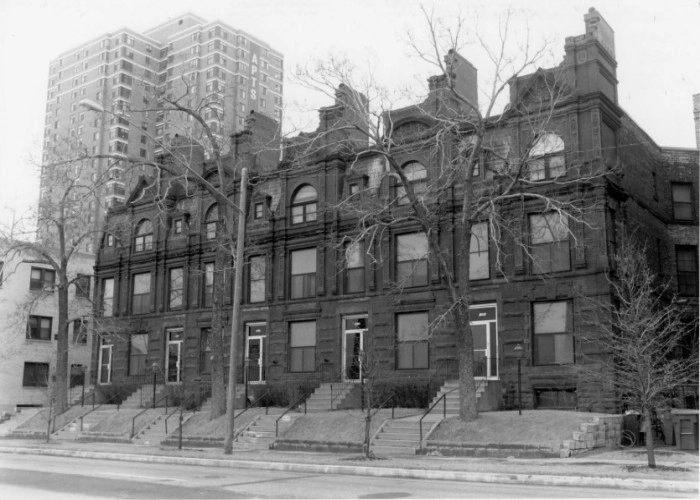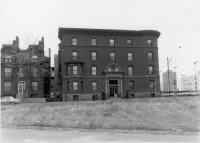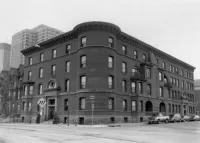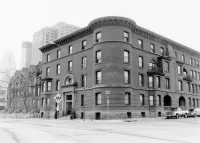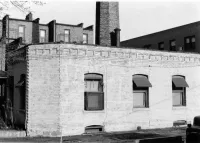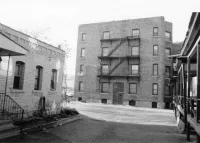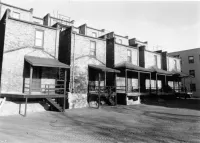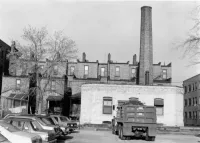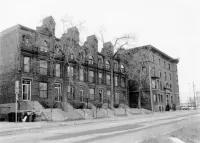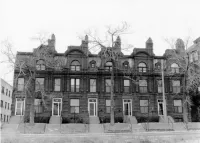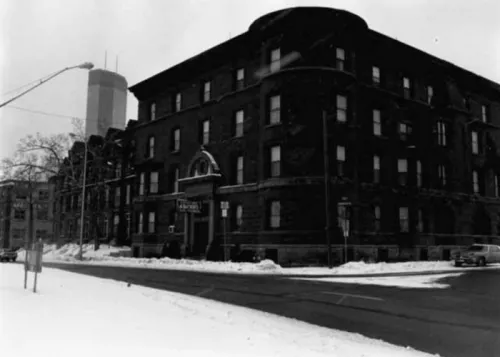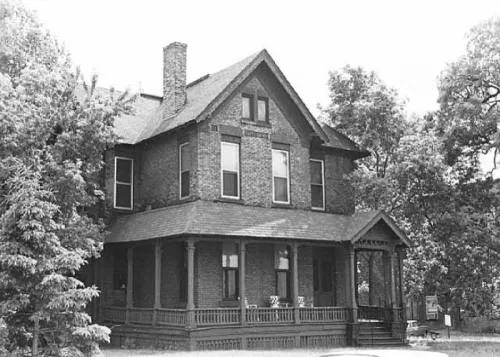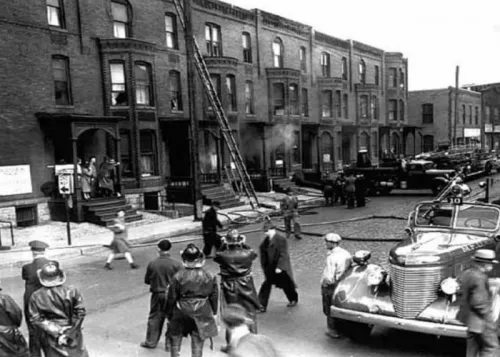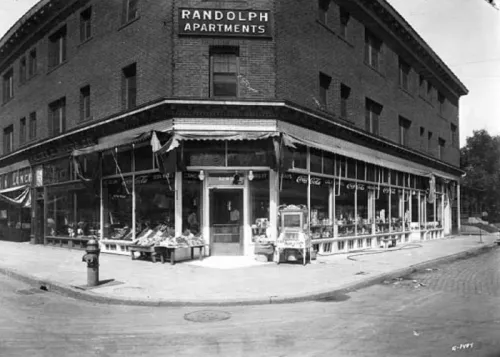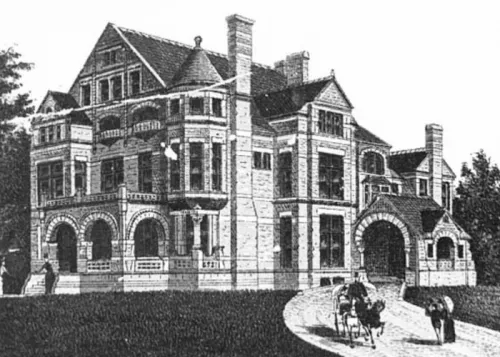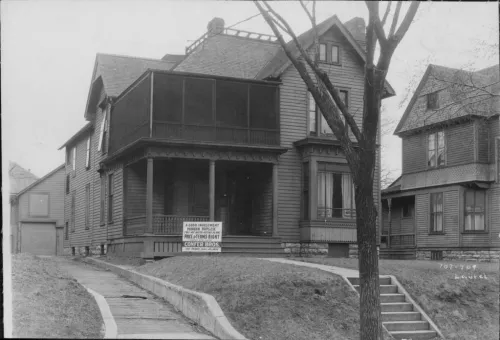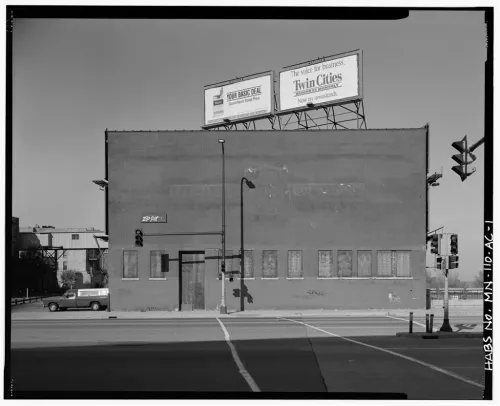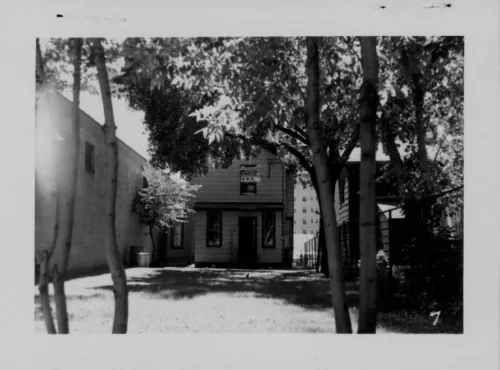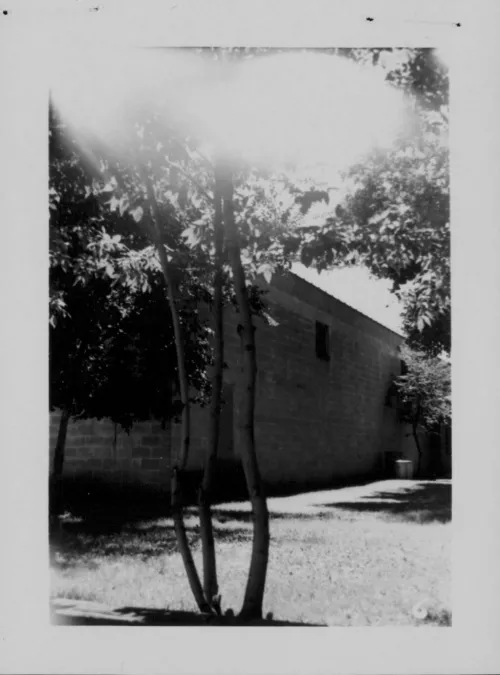Share what you know,
and discover more.
Share what you know,
and discover more.
Oct 25, 1990
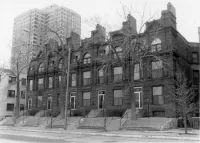
-

- Charmaine Bantugan
The Swinford Townhouses and Apartments - National Register of Historic Places
Statement of Significance: The Swinford Townhouses and Apartments are significant as outstanding illustrations of the French Renaissance and Renaissance Revival architectural styles, and as early examples of inner-city residences for the well-to-do, a type of housing that did not gain favor in Minneapolis until the early 1900s, and of which few extant buildings remain today. During the last quarter of the nineteenth century, Minneapolis grew at a dramatic rate and experienced considerable commercial and residential construction in and around the downtown area. As the city expanded, land surrounding the business district became increasingly popular for the wealthy to build sprawling Victorian period mansions. The area south of the city center around Hawthorn Park soon established a reputation as an exclusive and comfortable neighborhood for the city's elite. Numerous churches, the city library, and a new YMCA all were located along fashionable Hennepin Ave. within a few blocks of Hawthorn Park. A short distance to the south was Loring (formerly Central) Park, which had two ponds and formed the eastern edge of what would become an extensive urban parkway system beginning in the Kenwood Addition, one of the city's first lake developments platted in 1880. When they were constructed in 1886 and 1897, the Swinford Townhouses and Apartments were considered the vanguard of contemporary luxury living in Minneapolis. The buildings faced directly onto picturesque Hawthorne Park and occupied prime land immediately south of the city center. Prior to their erection, prominent Minneapolitans expressed a lifestyle of wealth and leisure through massive and ornate single-family dwellings. But by the late 1800s the nation had embraced the technological advances and efficient organization of domestic chores common to apartment house living. The Townhouses featured a fireplace - considered to be a classic symbol of domesticity - in the dining room, while each unit isolated the family from household drudgery, locating the maid's quarters on the top floor, and the butler's pantry at the rear of the building adjacent to the kitchen. In this way, Townhouse dwellers could devote more time to the pleasures of home, as a higher percentage of floor space was given over to rooms for entertaining. Residents in the Swinford Apartments similarly utilized numerous rooms in which to socialize with selected neighbors and friends. Both buildings relied on architectural elegance and luxurious decors to make a statement about the tenants and their homes, although aesthetic propriety was not limited to interior decoration. The Townhouses were executed in the French Renaissance style, a design noted for textural richness. The architecture of the Renaissance illustrated by the Townhouses emphasized distinctive horizontal divisions, rusticated masonry on lower floors, an abundance of richly detailed ornamentation, and wall and roof dormers. While the Renaissance was a common style for American residential construction in the late 1800s, few examples exist in Minneapolis, and certainly no other town house in the state exemplifies this design with more exuberant terra-cotta detailing than the Swinford. The Swinford Apartment building combines Richardson's emphasis bn solidity and massiveness (seen in the heavy limestone foundation, large corner bay, arched openings, and stone belt courses) with Classical and Renaissance features such as external and internal ornamentation, elaborate entrances and porch-support columns, rusticated surfaces, double hung windows, and a dentiled cornice. Historical sources reveal little about Edgar J. Hodgson (ca.1854-1916), an architect who practiced in St. Paul for two years with the firm of Hodgson, Wallingford and Stem, and from 1886-1890 as Hodgson and Stem. Hodgson was associated with W.T. Welter from Helena, Montana between ca.1885-90, at which time Hodgson designed the Lewis and Clark County Courthouse (1885-86) and the Original Governor's Mansion (1888, NRHP). In Minneapolis he engaged in private practice during the first decade of the twentieth century, although the extent of his designs remains obscure. Harry Wild Jones was a well-known, turn-of-the-century Minneapolis architect who gained respect for designs which combined a variety of popular architectural styles. He practiced in the Twin Cities from 1884-1918 and taught architecture at the University of Minnesota between 1891-93. Among Jones' more notable works are the Minnesota Yacht Club Clubhouse (destroyed by fire in ca. l940), the Washburn Water Tower, and the Butler Brothers Warehouse (1906, NRHP). The Lakewood Cemetery Chapel (1908, NRHP) is considered by many to be his magnum opus. Jones also designed numerous private residences in Minneapolis during the late 1800s and early 1900s including 325 and 411 Clifton Ave. (1904, 1896) and 2112 Kenwood Pkwy. (1892), as well as the Oakland Flats (1888) and Colonial Apartments (1895). Despite minor alterations, both the Swinford Townhouses and Apartments represent a distinctive type of turn-of-the-century multi-family housing uncommon in Minneapolis. While other examples of upper-class urban apartments remain in the city, all have lost their architectural integrity by alterations or recent additions. Owners of the Swinford buildings plan to rehabilitate the Townhouses and Apartments in 1988 to reflect their original opulence and appeal.
The Swinford Townhouses and Apartments - National Register of Historic Places
Statement of Significance: The Swinford Townhouses and Apartments are significant as outstanding illustrations of the French Renaissance and Renaissance Revival architectural styles, and as early examples of inner-city residences for the well-to-do, a type of housing that did not gain favor in Minneapolis until the early 1900s, and of which few extant buildings remain today. During the last quarter of the nineteenth century, Minneapolis grew at a dramatic rate and experienced considerable commercial and residential construction in and around the downtown area. As the city expanded, land surrounding the business district became increasingly popular for the wealthy to build sprawling Victorian period mansions. The area south of the city center around Hawthorn Park soon established a reputation as an exclusive and comfortable neighborhood for the city's elite. Numerous churches, the city library, and a new YMCA all were located along fashionable Hennepin Ave. within a few blocks of Hawthorn Park. A short distance to the south was Loring (formerly Central) Park, which had two ponds and formed the eastern edge of what would become an extensive urban parkway system beginning in the Kenwood Addition, one of the city's first lake developments platted in 1880. When they were constructed in 1886 and 1897, the Swinford Townhouses and Apartments were considered the vanguard of contemporary luxury living in Minneapolis. The buildings faced directly onto picturesque Hawthorne Park and occupied prime land immediately south of the city center. Prior to their erection, prominent Minneapolitans expressed a lifestyle of wealth and leisure through massive and ornate single-family dwellings. But by the late 1800s the nation had embraced the technological advances and efficient organization of domestic chores common to apartment house living. The Townhouses featured a fireplace - considered to be a classic symbol of domesticity - in the dining room, while each unit isolated the family from household drudgery, locating the maid's quarters on the top floor, and the butler's pantry at the rear of the building adjacent to the kitchen. In this way, Townhouse dwellers could devote more time to the pleasures of home, as a higher percentage of floor space was given over to rooms for entertaining. Residents in the Swinford Apartments similarly utilized numerous rooms in which to socialize with selected neighbors and friends. Both buildings relied on architectural elegance and luxurious decors to make a statement about the tenants and their homes, although aesthetic propriety was not limited to interior decoration. The Townhouses were executed in the French Renaissance style, a design noted for textural richness. The architecture of the Renaissance illustrated by the Townhouses emphasized distinctive horizontal divisions, rusticated masonry on lower floors, an abundance of richly detailed ornamentation, and wall and roof dormers. While the Renaissance was a common style for American residential construction in the late 1800s, few examples exist in Minneapolis, and certainly no other town house in the state exemplifies this design with more exuberant terra-cotta detailing than the Swinford. The Swinford Apartment building combines Richardson's emphasis bn solidity and massiveness (seen in the heavy limestone foundation, large corner bay, arched openings, and stone belt courses) with Classical and Renaissance features such as external and internal ornamentation, elaborate entrances and porch-support columns, rusticated surfaces, double hung windows, and a dentiled cornice. Historical sources reveal little about Edgar J. Hodgson (ca.1854-1916), an architect who practiced in St. Paul for two years with the firm of Hodgson, Wallingford and Stem, and from 1886-1890 as Hodgson and Stem. Hodgson was associated with W.T. Welter from Helena, Montana between ca.1885-90, at which time Hodgson designed the Lewis and Clark County Courthouse (1885-86) and the Original Governor's Mansion (1888, NRHP). In Minneapolis he engaged in private practice during the first decade of the twentieth century, although the extent of his designs remains obscure. Harry Wild Jones was a well-known, turn-of-the-century Minneapolis architect who gained respect for designs which combined a variety of popular architectural styles. He practiced in the Twin Cities from 1884-1918 and taught architecture at the University of Minnesota between 1891-93. Among Jones' more notable works are the Minnesota Yacht Club Clubhouse (destroyed by fire in ca. l940), the Washburn Water Tower, and the Butler Brothers Warehouse (1906, NRHP). The Lakewood Cemetery Chapel (1908, NRHP) is considered by many to be his magnum opus. Jones also designed numerous private residences in Minneapolis during the late 1800s and early 1900s including 325 and 411 Clifton Ave. (1904, 1896) and 2112 Kenwood Pkwy. (1892), as well as the Oakland Flats (1888) and Colonial Apartments (1895). Despite minor alterations, both the Swinford Townhouses and Apartments represent a distinctive type of turn-of-the-century multi-family housing uncommon in Minneapolis. While other examples of upper-class urban apartments remain in the city, all have lost their architectural integrity by alterations or recent additions. Owners of the Swinford buildings plan to rehabilitate the Townhouses and Apartments in 1988 to reflect their original opulence and appeal.
Oct 25, 1990
The Swinford Townhouses and Apartments - National Register of Historic Places
Statement of Significance:The Swinford Townhouses and Apartments are significant as outstanding illustrations of the French Renaissance and Renaissance Revival architectural styles, and as early examples of inner-city residences for the well-to-do, a type of housing that did not gain favor in Minneapolis until the early 1900s, and of which few extant buildings remain today. During the last quarter of the nineteenth century, Minneapolis grew at a dramatic rate and experienced considerable commercial and residential construction in and around the downtown area. As the city expanded, land surrounding the business district became increasingly popular for the wealthy to build sprawling Victorian period mansions. The area south of the city center around Hawthorn Park soon established a reputation as an exclusive and comfortable neighborhood for the city's elite. Numerous churches, the city library, and a new YMCA all were located along fashionable Hennepin Ave. within a few blocks of Hawthorn Park. A short distance to the south was Loring (formerly Central) Park, which had two ponds and formed the eastern edge of what would become an extensive urban parkway system beginning in the Kenwood Addition, one of the city's first lake developments platted in 1880. When they were constructed in 1886 and 1897, the Swinford Townhouses and Apartments were considered the vanguard of contemporary luxury living in Minneapolis. The buildings faced directly onto picturesque Hawthorne Park and occupied prime land immediately south of the city center. Prior to their erection, prominent Minneapolitans expressed a lifestyle of wealth and leisure through massive and ornate single-family dwellings. But by the late 1800s the nation had embraced the technological advances and efficient organization of domestic chores common to apartment house living. The Townhouses featured a fireplace - considered to be a classic symbol of domesticity - in the dining room, while each unit isolated the family from household drudgery, locating the maid's quarters on the top floor, and the butler's pantry at the rear of the building adjacent to the kitchen. In this way, Townhouse dwellers could devote more time to the pleasures of home, as a higher percentage of floor space was given over to rooms for entertaining. Residents in the Swinford Apartments similarly utilized numerous rooms in which to socialize with selected neighbors and friends.
Both buildings relied on architectural elegance and luxurious decors to make a statement about the tenants and their homes, although aesthetic propriety was not limited to interior decoration. The Townhouses were executed in the French Renaissance style, a design noted for textural richness. The architecture of the Renaissance illustrated by the Townhouses emphasized distinctive horizontal divisions, rusticated masonry on lower floors, an abundance of richly detailed ornamentation, and wall and roof dormers. While the Renaissance was a common style for American residential construction in the late 1800s, few examples exist in Minneapolis, and certainly no other town house in the state exemplifies this design with more exuberant terra-cotta detailing than the Swinford. The Swinford Apartment building combines Richardson's emphasis bn solidity and massiveness (seen in the heavy limestone foundation, large corner bay, arched openings, and stone belt courses) with Classical and Renaissance features such as external and internal ornamentation, elaborate entrances and porch-support columns, rusticated surfaces, double hung windows, and a dentiled cornice.
Historical sources reveal little about Edgar J. Hodgson (ca.1854-1916), an architect who practiced in St. Paul for two years with the firm of Hodgson, Wallingford and Stem, and from 1886-1890 as Hodgson and Stem. Hodgson was associated with W.T. Welter from Helena, Montana between ca.1885-90, at which time Hodgson designed the Lewis and Clark County Courthouse (1885-86) and the Original Governor's Mansion (1888, NRHP). In Minneapolis he engaged in private practice during the first decade of the twentieth century, although the extent of his designs remains obscure.
Harry Wild Jones was a well-known, turn-of-the-century Minneapolis architect who gained respect for designs which combined a variety of popular architectural styles. He practiced in the Twin Cities from 1884-1918 and taught architecture at the University of Minnesota between 1891-93. Among Jones' more notable works are the Minnesota Yacht Club Clubhouse (destroyed by fire in ca. l940), the Washburn Water Tower, and the Butler Brothers Warehouse (1906, NRHP). The Lakewood Cemetery Chapel (1908, NRHP) is considered by many to be his magnum opus. Jones also designed numerous private residences in Minneapolis during the late 1800s and early 1900s including 325 and 411 Clifton Ave. (1904, 1896) and 2112 Kenwood Pkwy. (1892), as well as the Oakland Flats (1888) and Colonial Apartments (1895).
Despite minor alterations, both the Swinford Townhouses and Apartments represent a distinctive type of turn-of-the-century multi-family housing uncommon in Minneapolis. While other examples of upper-class urban apartments remain in the city, all have lost their architectural integrity by alterations or recent additions. Owners of the Swinford buildings plan to rehabilitate the Townhouses and Apartments in 1988 to reflect their original opulence and appeal.
Posted Date
Mar 10, 2022
Historical Record Date
Oct 25, 1990
Source Name
United States Department of Interior - National Park Service
Source Website
Delete Story
Are you sure you want to delete this story?
